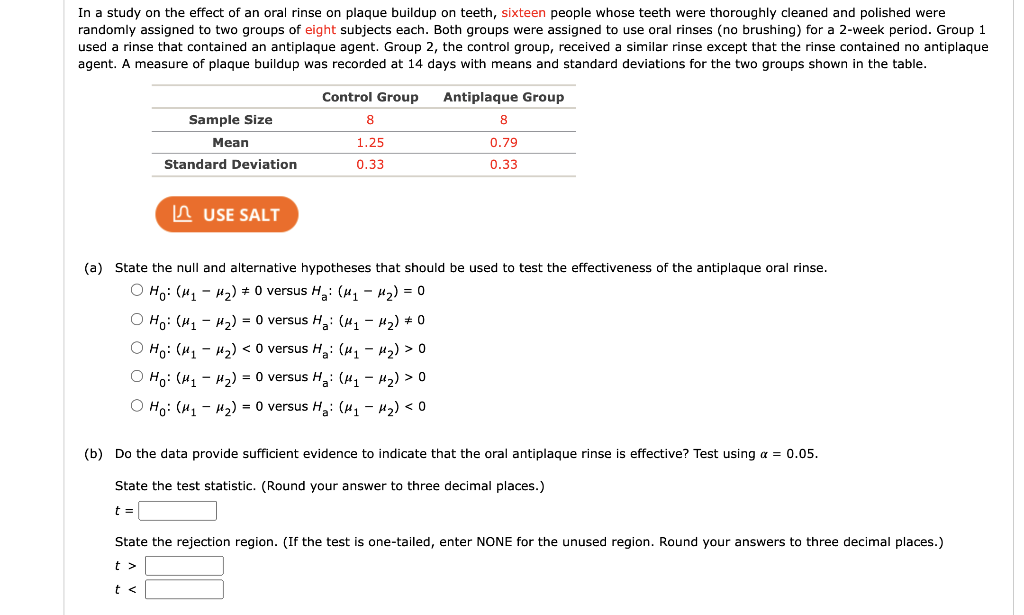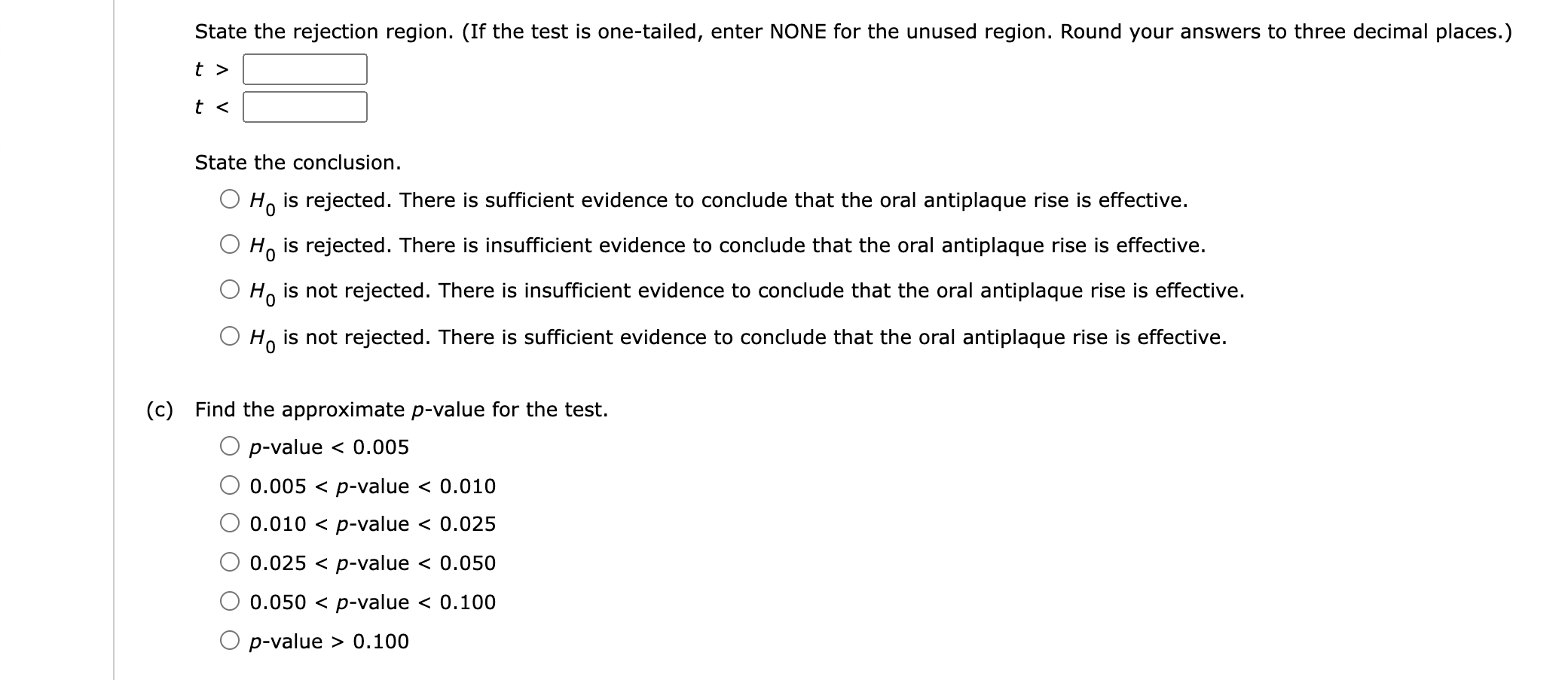Home /
Expert Answers /
Nursing /
in-a-study-on-the-effect-of-an-oral-rinse-on-plaque-buildup-on-teeth-sixteen-people-whose-teeth-w-pa593
(Solved): In a study on the effect of an oral rinse on plaque buildup on teeth, sixteen people whose teeth w ...
In a study on the effect of an oral rinse on plaque buildup on teeth, sixteen people whose teeth were thoroughly cleaned and polished were randomly assigned to two groups of eight subjects each. Both groups were assigned to use oral rinses (no brushing) for a 2-week period. Group 1 used a rinse that contained an antiplaque agent. Group 2, the control group, received a similar rinse except that the rinse contained no antiplaque agent. A measure of plaque buildup was recorded at 14 days with means and standard deviations for the two groups shown in the table. Antiplaque Group 8 Sample Size Mean Standard Deviation Control Group 8 1.25 0.33 0.79 0.33 in USE SALT (a) State the null and alternative hypotheses that should be used to test the effectiveness of the antiplaque oral rinse. OHO: (H1 – ) #0 versus H: (M4 - My) = 0 Ho: (H1 - H2) = 0 versus Ha: (H1 - H2) = 0 O Ho: (41 - H2) < 0 versus Ha: (41 - 42) > 0 O Ho: (- H2) = 0 versus H : (41 - H2) > 0 OHO: (#1 - "2) = 0 versus H: (#1 - H2) < 0 (b) Do the data provide sufficient evidence to indicate that the oral antiplaque rinse is effective? Test using a = 0.05. State the test statistic. (Round your answer to three decimal places.) State the rejection region. (If the test is one-tailed, enter NONE for the unused region. Round your answers to three decimal places.) t>
State the rejection region. (If the test is one-tailed, enter NONE for the unused region. Round your answers to three decimal places.) t > t < State the conclusion. Ho is rejected. There is sufficient evidence to conclude that the oral antiplaque rise is effective. Ho is rejected. There is insufficient evidence to conclude that the oral antiplaque rise is effective. Ho is not rejected. There is insufficient evidence to conclude that the oral antiplaque rise is effective. Ho is not rejected. There is sufficient evidence to conclude that the oral antiplaque rise is effective. (c) Find the approximate p-value for the test. O p-value < 0.005 0.005 < p-value < 0.010 0.010 < p-value < 0.025 0.025 < p-value < 0.050 0.050 < p-value < 0.100 p-value > 0.100
Expert Answer
For Control : x?1 = 1.25, s1 = 0.33, n1 = 8 For Antiplaque : x?2 = 0.79, s2 = 0.33, n2 = 8 a) Null and Alternative hypothesis: Ho :

